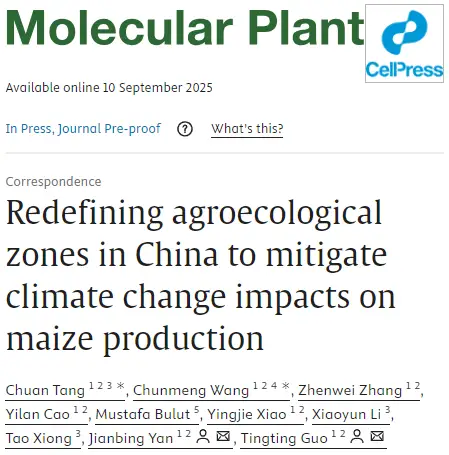
Abstract
Global maize yields are stagnating, with over 50% of China’s growing areas experiencing yield plateaus (Gerber et al., 2024). Climate change significantly contributes to this stagnation (Tigchelaar et al., 2018; Rizzo et al., 2022). Current breeding efforts for climate-adapted maize are still in the early stages (Xiong et al., 2022). A major challenge is that existing agroecological zones (AEZs) were defined without considering evolving climatic variations essential for effective breeding (Supplemental Table 1). Traditional AEZs in China, based on static environmental factors (Li, 2009), aid agricultural planning but are less effective for guiding breeding practices. Instead, mega-environment concepts use yield data from multi- environment trials (MET) to identify genotype-by-environmentinteraction patterns, offering better delineation of homogeneous zones (Yan et al., 2023). However, mega-environments require labor-intensive MET experiments, complicating the process amid climate change. To address these challenges, we propose a new approach that combines high-resolution, daily-scale environmental data with muti-location, multi-year yield data from METs nationwide. This scalable tool, called multi-dimensional environment (MDE) zoning, segments large maize-growing areas into distinct environmental zones, enhancing breeding efficiency in changing climates. We defined MDE zones by identifying environmental variables affecting grain yield in national trials and grouping grid-level sites in China accordingly (Supplemental Figure 1). We evaluated the tool’s performance by comparing new MDE zones with traditional ones in terms of geographical coverage and yield variation. We propose three strategies that leverage this tool to improve breeding efficiency and maximize future maize production.






